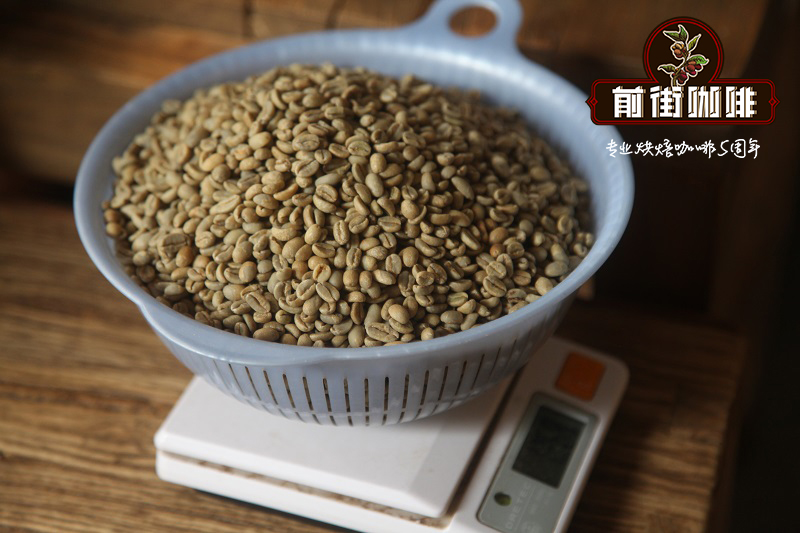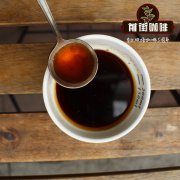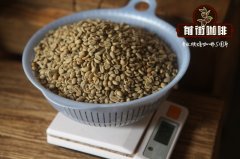Do Brazilian Santos coffee beans taste good? What flavor and taste do you have, and what do you recommend for cooking?

Professional coffee knowledge exchange more coffee bean information please follow the coffee workshop (Wechat official account cafe_style)
Do Brazilian Santos coffee beans taste good? What flavor and taste do you have, and what do you recommend for cooking?
Brazil accounts for 30% of global coffee production. Coffee is mainly produced in the southeast, mostly exported through the port of santos, hence the name Brazilian Santos coffee beans. Brazil is currently the largest coffee producer in the world, so Brazilian beans are also one of the main ingredients of all mixed coffee, but because Brazilian beans have their special flavor, but are not favored by buyers, they are often used as a substitute when coffee bean production is low. Santos is a kind of neutral coffee beans, which is characterized by flat and neutral taste, and its overall taste is neither bitter nor sour. It is known as the firmness of coffee and is often used to mix with other coffee beans. For example, Mamba coffee made in Brazil and Mantenin is widely loved by the public.
Coffee was first introduced to Brazil in the early 18th century. In 1727, the Brazilian government sent a personable army officer to secretly bring coffee seeds from French Gaiana to Brazil on the pretext of mediating border disputes. It is said that the governor's wife of French Gayana was so fascinated by the officer that she secretly brought coffee tree seeds to him at a farewell dinner party. At present, 2 million hectares of land in Brazil is used to grow coffee, the largest is Arabica, and the beans will eventually be sent to large bakers in various countries, also known as Santos (in the name of the export port of Santos, not the producing area). Brazil has also proved to be able to produce gourmet coffee and small quantities of coffee, and the local boutique coffee can not only be provided by small-scale coffee farmers. The main coffee producing areas in Brazil are Sul de Minas South Minas, Matas de Minas Minas South East Mountain Forest, Cerrado Hirado, the north-central mausoleum of Chapadas de Minas Minas, Mogiana, Paran á Parana and Bahia Bachia. There are both traditional varieties and variants, such as Bourbon, Mondo Novo Mondonovo, Icat ú Ikatu, Kaduai, Iapar, cultivated card Taiyi.
Brazil, which can be called the "coffee continent", is the world's largest coffee producer and exporter, accounting for about 1% of the world's total output. It is especially famous for Brazil's Brazil Santos, which is exported from Santos Port in Sao Paulo. The raw beans are large, light green or yellowish. Brazilian Santos, with a mild flavor, is suitable for those who first come into contact with coffee and can drink a touch of sweetness without adding sugar. Acidity and bitterness can be mixed by baking, and it is often used as the base for blending mixed coffee or mamba or Mamba coffee.
The Santos coffee in Brazil is famous for its export port, which is mainly produced in the states of Sao Paulo and Panama, and is one of the highest production and best quality in Brazil. Therefore, the blending of many mixed coffees is based on Brazilian Santos coffee, which is neutral and fragrant, with no irritating sour taste, slightly bitter, smooth and smooth. Santos coffee is also called Bourbon Santos, which has the sweet taste of mocha coffee, so it is also called Brazilian mocha.
Coffee beans-SANTOS, large, light green or yellowish beans, because local beans are mostly sun-treated, with brown cracks in the middle, and are almost always used for blending. High aroma, suitable for bitterness, as well as sour taste of high-grade products, can also be drunk directly.
Brazilian coffee is named Brazil Santos after its port (Santos). Its output accounts for about 1x3 of the total coffee output in the world and occupies a pivotal position in the global overall trading market, so the coffee produced is of uniform quality and is generally considered to be an indispensable coffee bean for mixing and blending. Its taste is round, neutral with moderate sour taste.
The aroma of Brazilian coffee is very harmonious, neutral and fragrant, with aromas of dried red dates, cinnamon, nutmeg and earthy aromas. the taste is initially well balanced, then slightly sour is felt, and the last throat rhyme is slightly bitter.
Almost all of them are used for blending, with high aroma, suitable bitterness, as well as sour taste of high-grade products, and can be drunk directly. Since ancient times, it has been a necessity of blended coffee and is familiar to the public. Brazilian coffee beans are also often used to make mixed coffee because they are suitable for any kind of beans, and because they provide beans of stable quality, Brazil produces more coffee than any other country in the world. By adding Brazilian beans to sour beans, you can use the bitterness of Brazilian coffee to ease the over-personalized flavor of other coffee, such as mocha, Guatemala, Kilimanjaro and other sour beans. Brazil to combine his bitterness to ease the sour taste of other coffee, the taste will become more palatable. Brazilian Santos coffee is exported from the port of Santos in Sao Paulo state and is the highest grade of Brazilian coffee. Large, light green or yellowish beans with brown cracks in the middle, and most of the beans are treated in the sun.
Santos NO2 is no more than 4 missing beans in 300g raw beans, the highest grade of Brazilian Santos coffee, and is sorted by a sieve with the same size as each hole, 18-mesh large beans.
Qianjie cuisine is recommended:
Filter cup: Hario V60
Water temperature: 88 degrees
Degree of grinding: small Fuji degree of grinding 4
Cooking methods: the ratio of water to powder is 1:15, 15g powder, the first injection of 25g water, 25 s steaming, the second injection to 120g water cut off, waiting for the powder bed water to half and then water injection, slow water injection until 225g water, extraction time about 2:00
Analysis: using three-stage brewing to clarify the flavor of the front, middle and back of the coffee. Because V60 has many ribs and the drainage speed is fast, it can prolong the extraction time when the water is cut off.
Important Notice :
前街咖啡 FrontStreet Coffee has moved to new addredd:
FrontStreet Coffee Address: 315,Donghua East Road,GuangZhou
Tel:020 38364473
- Prev

Smooth taste and balanced flavor-the flavor and taste of Brazilian Santos coffee? Is the hand good to drink?
Professional coffee knowledge exchange more coffee bean information please follow the coffee workshop (Wechat official account cafe_style) taste smooth, balanced flavor-the flavor and taste of Brazilian Santos coffee? Is the hand good to drink? Brazil is the world's largest coffee producer and exporter, accounting for about half of all world production, while Brazilian Santos coffee is the representative of Brazilian coffee. Santos comes from
- Next

The flavor and characteristics of EU+NOP sun-dried beans from Saquarema Farm in South Minas, Brazil? How to flush by hand
Professional coffee knowledge exchange more coffee bean information please follow the coffee workshop (Wechat official account cafe_style) South Minas Saquarema Farm in Brazil the flavor and characteristics of sun-dried beans EU+NOP? How to cook it by hand? After 2000, due to the inducement of coffee competition, the quality of coffee beans produced in the high altitude areas of the south was appreciated, surrounded by its Minas platform.
Related
- Detailed explanation of Jadeite planting Land in Panamanian Jadeite Manor introduction to the grading system of Jadeite competitive bidding, Red bid, Green bid and Rose Summer
- Story of Coffee planting in Brenka region of Costa Rica Stonehenge Manor anaerobic heavy honey treatment of flavor mouth
- What's on the barrel of Blue Mountain Coffee beans?
- Can American coffee also pull flowers? How to use hot American style to pull out a good-looking pattern?
- Can you make a cold extract with coffee beans? What is the right proportion for cold-extracted coffee formula?
- Indonesian PWN Gold Mandrine Coffee Origin Features Flavor How to Chong? Mandolin coffee is American.
- A brief introduction to the flavor characteristics of Brazilian yellow bourbon coffee beans
- What is the effect of different water quality on the flavor of cold-extracted coffee? What kind of water is best for brewing coffee?
- Why do you think of Rose Summer whenever you mention Panamanian coffee?
- Introduction to the characteristics of authentic blue mountain coffee bean producing areas? What is the CIB Coffee Authority in Jamaica?

